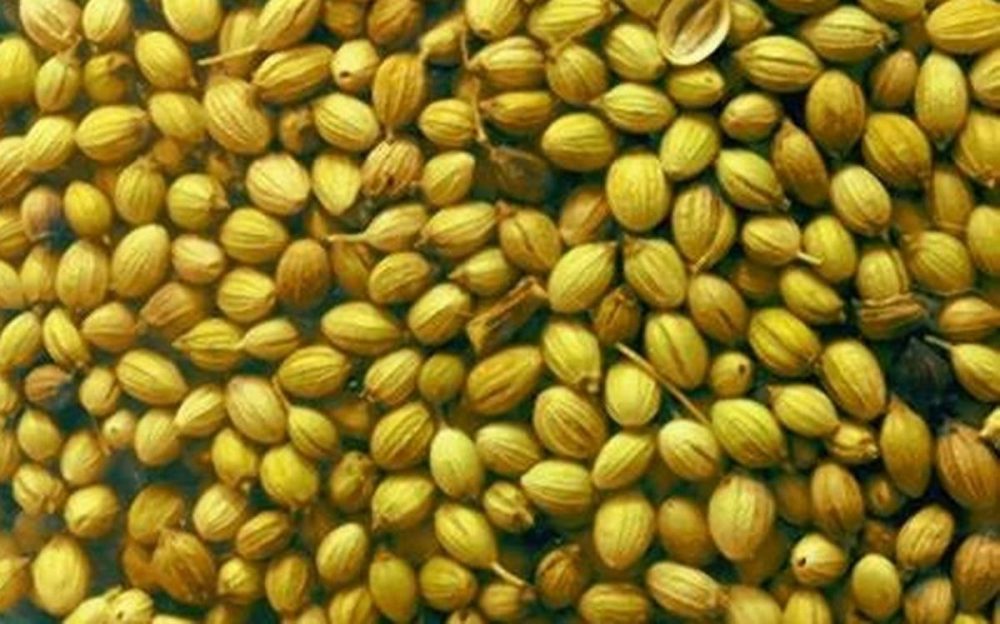Coriander farming business is very profitable to the farmers. They cultivate coriander for its fruits as well as for the tender green leaves. Andhra Pradesh, Rajasthan, Tamil Nadu, Karnataka and Madhya Pradesh are the largest producers of coriander. Moreover, our country exports coriander spice to other countries. That’s why it is a beneficial spice for our country’s economy.
Major Tips to Know About Coriander Farming
The coriander fruit has a pleasant taste and excellent fragrance. This fragrance and flavour are because of the essential oil content, from 0.1 to 1.0% in the dry seeds. We can use these essential oils in the coca preparations in confectionary, flavouring liquors and cover the odours in pharmaceutical preparations.
The dried ground fruits are the prime ingredients of the curry powder. We use the whole fruits for the flavouring the foods like sauces, pickles and confectionery. The new plant, as well as the leaves, are utilised in the preparation of chutneys and as the seasonings in soups, curries, sauces and chutneys. With their medicinal properties, the fruits have tonic, carminative, diuretic, stomachic and aphrodisiac properties.
Coriander is an annual herb 30 to 70 cm high, upper leaves finely cut with linearly lobes, lower leaves broad with crenately margins, flowers small, pink or white in compound terminal umbels. Fruits – yellow-brown, ribbed, 2 seeds, schizocarp, globular, ripe seeds are aromatic.
Climate and Soil
Coriander is an annual herb and is grown during all the seasons throughout the year except very hot seasons, i.e. March-May, for the leaf purpose. Apart from this, for higher production, it has to be cultivated in a specific season. You must cultivate it in dry and cold weather, free from frost, particularly during the flowering and fruit setting stage. Cloudy weather can be harmful to the flowers and can be the cause of pest and disease incidences. Heavy rain also can affect the crop. Coriander can be cultivated on almost all types of soils as an irrigated crop. But the black cotton soil is best for the coriander farming business.
Varieties
Several varieties of coriander are available, but we are here with some quality varieties from Andhra Pradesh, Tamil Nadu, Gujarat, and Rajasthan states.
CO1
CO2
Gujarat Coriander-1
CO3
Gujarat Coriander-2
Rajendra Swati
Rcr-41
Swati
Sadhana
Land Preparation
For growing a rainfed crop, The field has to be ploughed 3 to 4 times following rains. And field must be planted immediately so that you can avoid clods and soil moisture. For irrigated crops, you have to plough the area 2 or 3 times, and you have to form beds and channels. You can use mileage tractors like Powertrac Euro 50 for these operations.
Sowing
Farmers from the North and Central parts of India and Andhra Pradesh cultivate it as a Rabi season crop. Hence, they sow this crop in between the middle of October to the middle of November. Sometimes, they grow it as a late Kharif crop in certain pockets of the above area from August to September. Farmers from Tamil Nadu cultivate it as an irrigated crop in the month of June-July and September-October. In the first season, the coriander matures late and shows an extended growth phase during January-February. The yield rainfed condition and growth during September-October at northeast monsoon and harvest during January-February.
The seed rate for this farming is to be 10 to 15 Kg per hectare. Seeds, which are stored 15-30 days, record early and better germination than new seeds. You can soak seeds in water for 12 – 24 hours for better germination. You can split seeds into 2 halves by rubbing them. It was generally done in rows spaced at 30 to 40 Cm. You must keep the soil depth 2 to 3 Cm. After the sowing, germination takes place in 10 to 15 days.
Before sowing, you have to prepare land for the sowing. It is the work, which can decide your yield production that what will be your farm production. That’s why you should go with an excellent tractor like Powertrac Euro 60 and others.
Irrigation
You should rinse the field after 3 days of sowing; after that, 10 to 15 days interval according to the soil’s moisture. You have to irrigate the field correctly so water can not be stored at a place in the area.
Intercultural
In about 30 days you should give first hoeing and weeding. After that, you should do thinning the plants simultaneously, leaving 2 plants per hill. Weeding one or two depends upon the growth of the crop.
Harvesting and yield
In 90 to 110 days, the crop will be ready for harvesting, which depends on the growth and variety of the crop. You can harvest the field when fruits are fully ripe and start changing from green to brown colour. You have to skip delays in the harvesting so that you can get the fresh yield.
To get more updates about farming and others, wait for our next blog.



